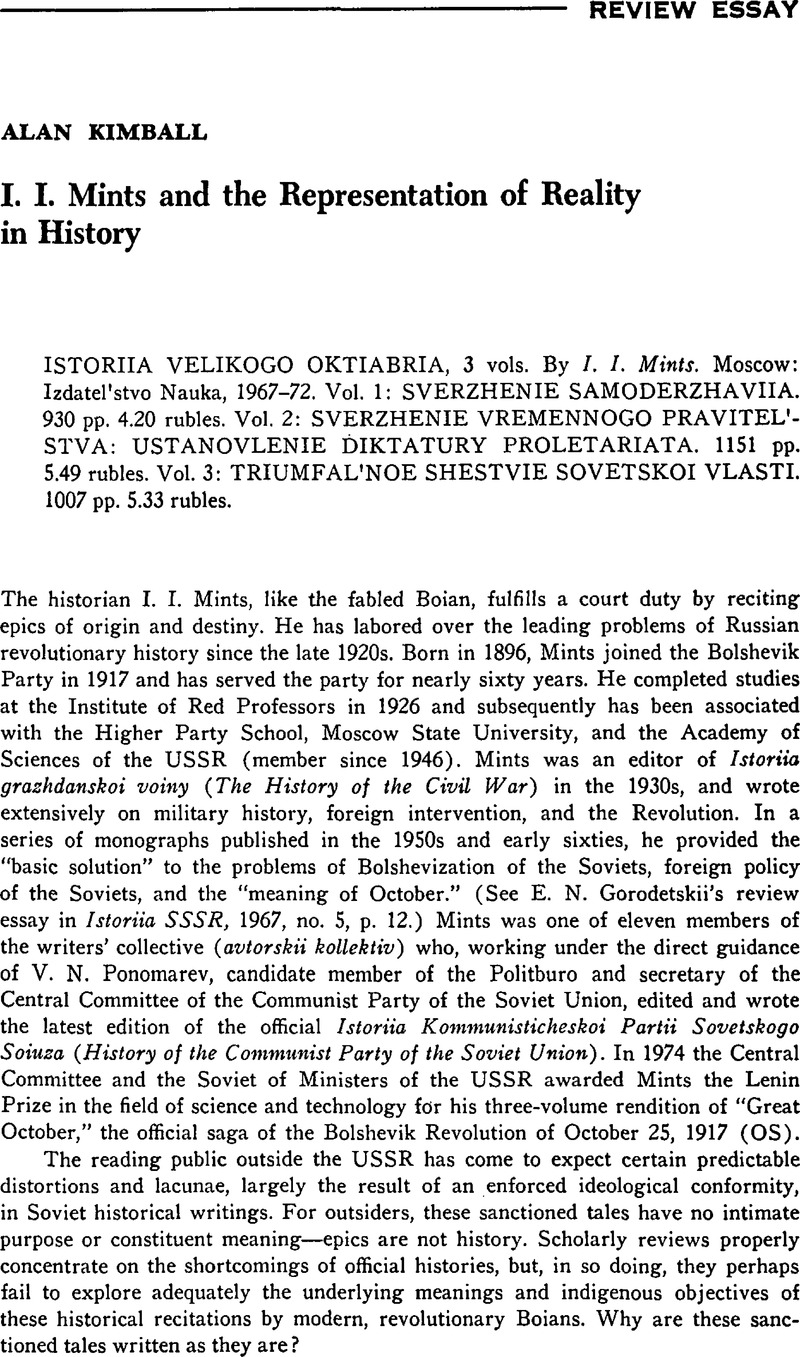Published online by Cambridge University Press: 27 January 2017

1. Auerbach, Erich, in Mimesis: Dargestellte Werklichkeit in der abendländischen Literatur (Bern and Munich, 1967)Google Scholar, defines figura as a representation of reality which, without sacrificing any of its “concreteness, ” “establishes the interrelationship between two events or individuals, when one signifies not only itself, but simultaneously a second, or another, which in turn contains or fulfills the first. The two poles of the figura are separated in time, but as real events or persons they lie on a chronological plane. Both are contained within that flowing stream which is historical life, but the understanding, intellectus spiritualis, of their interrelationship is transformed into a spiritual act.” The citation is from the Russian translation which just appeared: Mimesis: Izobrazhenie deistvitel'nosti v sapadnoevropeiskoi literature (Moscow, 1976), p. 90.
2. Steven Marcus (Engels, Manchester, and the Working Class) has recently observed that the dilemma of middle-class revolutionists in ironic alliance with the proletariat can be traced back at least to Marx and Engels. Engels asserted that the more “intelligent” of the bourgeoisie could become a part of the workers movement as a result of pure rational choice. Marcus observes that this notion bears strong resemblance to Matthew Arnold's idea of “Culture”: “A notion of an ideal allegiance that transcends conflict and class interest, and binds humanity together in a society that has gone beyond politics” (see A. J. P. Taylor's review article, Times Literary Supplement, October 25, 1974, p. 1181).
3. My own reading of the nearly 250 biographies and autobiographies of leading Bolshevik activists in the October Revolution, published in Entsiklopedicheskii slovar1 russkogo bibliograficheskogo instituta Granat, vol. 41, parts 1-3, confirms the estimate of Haupt, Georges and Marie, J. J., eds., The Makers of the Russian Revolution (Ithaca, N.Y., 1974), pp. 22–23.Google Scholar